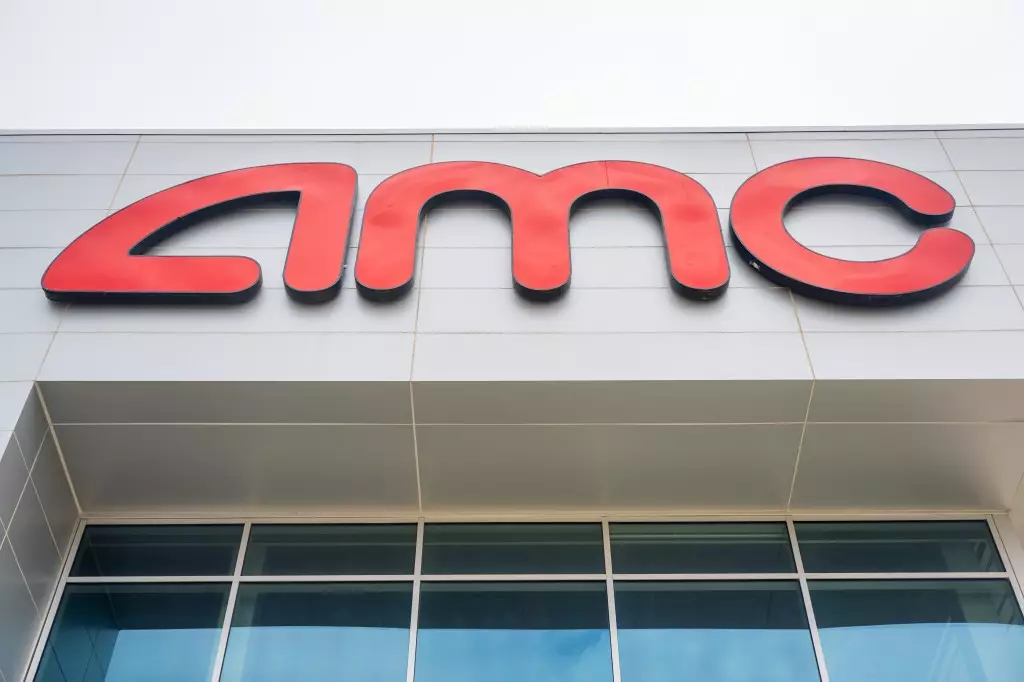The film industry is no stranger to fluctuating fortunes, and the latest quarterly results from AMC Entertainment have stirred up conversation. Despite witnessing a dip in revenue and an increase in net losses, AMC’s CEO, Adam Aron, remains firmly optimistic about the immediate future. He categorically rejects the notion that the first quarter of 2025 is indicative of a long-term trend for the movie theatre business. Instead, he frames it as an aberration. “To draw conclusions from the first quarter results would be misguided,” he asserts, suggesting that viewing this quarter in isolation ignores broader trends that suggest recovery is on the horizon.
While it is true that AMC reported a net loss widening to $202 million from $163 million year-over-year, the context is crucial. Revenue at $862 million, although down from $951 million, surpassed Wall Street predictions, illustrating that audience appetite for cinema remained robust even in a challenging quarter. Pessimists may point to the dismal attendance figures—ranking it as the lowest since 1996—but Aron argues that recent performance in April and May shows a resurgence, with the box office doubling from the previous year.
The Resurgence of Box Office Demand
Looking beyond disheartening quarterly results, it is vital to note the dramatic turnaround in box office performance that has occurred in subsequent months. AMC’s assertion that April 2025’s figures were twice those of April 2024 paints a promising picture for movie theatres. This evident recovery is not only a sign of resilience but also a crucial affirmation for the industry and its stakeholders. Driven by anticipated blockbuster releases, audience engagement appears to be returning with vigor.
Upcoming films are anticipated to further galvanize this momentum. Titles like the Minecraft Movie, alongside superhero franchises and family films from Disney and Sony, are likely to reinvigorate foot traffic in theatres. Disney’s Lilo & Stitch isn’t just nostalgia; it’s a calculated move to tap into robust audience emotions and preferences. Such varied content could not only attract a wide demographic but also reinstate the communal magic that comes with watching movies on the big screen.
Cashing In on Patrons’ Loyalty
Faced with declining audiences post-COVID, AMC has made strategic investments in customer loyalty programs, which have yielded positive results. The AMC Stubs loyalty and A-List subscription programs are shining examples of how businesses can adapt to changing consumer preferences. By providing appealing incentives to moviegoers, the chain has seen significant growth in per-patron admissions revenue, a performance milestone that underscores the changing dynamics of consumer behavior. In an era where convenience often outweighs everything, these loyalty programs create compelling reasons for moviegoers to return.
The enhanced offerings such as IMAX or premium formats also ensure that AMC differentiates itself amid intense market competition. As the industry leans into unique cinema experiences, it becomes imperative that exhibitors elevate the viewing experience, which AMC seems to be doing effectively.
Financial Outlook and Market Positioning
Despite concerns over liquidity, where the net cash used in operating activities stood at $370 million compared to $188 million in the same quarter last year, the company’s robust cash reserves—ending March at $379 million—provide a buffer against immediate financial stress. Furthermore, the fluctuation of AMC’s stock price reflects the current volatility of the market surrounding meme stocks, but this should not overshadow the intrinsic value AMC holds in the entertainment ecosystem.
Investors and skeptics should closely monitor the environment as AMC continues to adapt and innovate to meet the market’s demands. As box office performances rebound in the latter half of the year, there is ample reason to believe that the trends might swiftly turn in AMC’s favor.
The Cultural Significance of Cinema
Beyond the numbers and quarterly reports, part of what makes AMC’s narrative compelling is the cultural significance of moviegoing itself. Cinema isn’t merely about the bottom line; it’s about shared experiences, storytelling, and escapism that often prove invaluable in an increasingly disconnected world. As we transition back to normalcy, the relevance of movie theaters in delivering these experiences cannot be understated. The undercurrent of AMC’s recent struggles coupled with their strong belief in recovery encapsulates a message that resonates deeply in the hearts of cinema lovers everywhere.


Leave a Reply